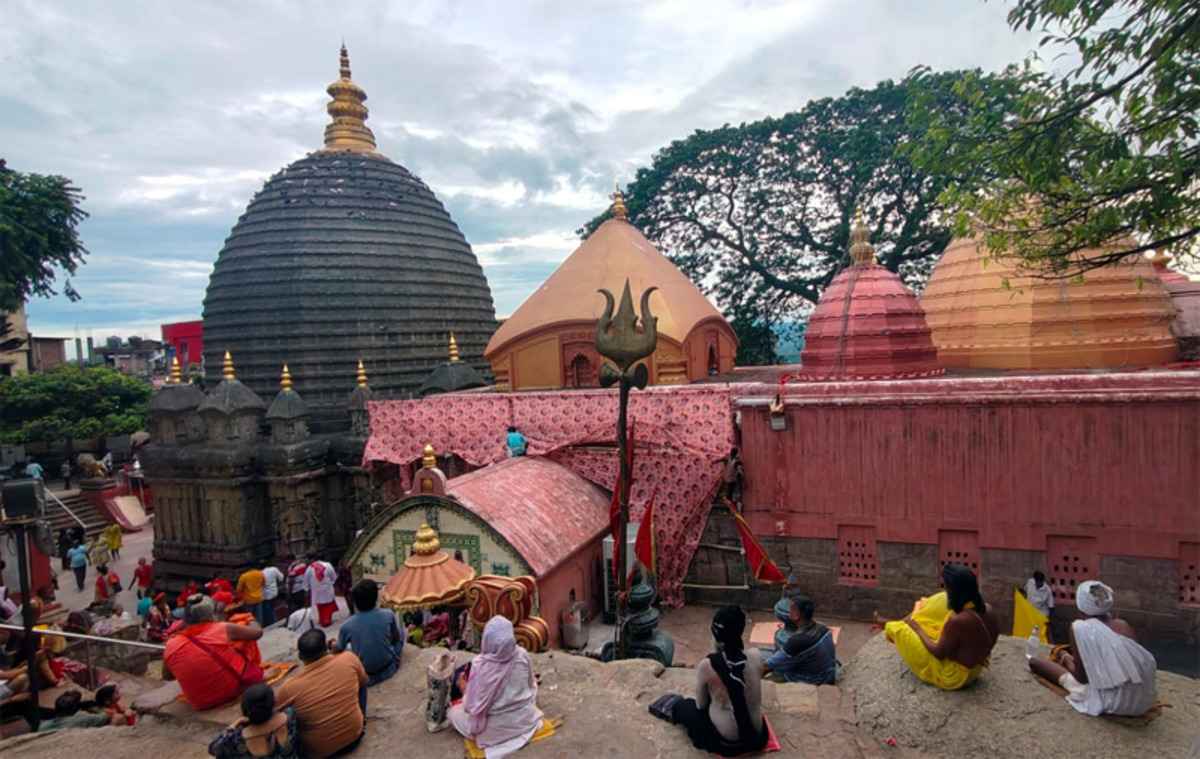Every year, the Kamakhya Temple in Guwahati, Assam becomes the focal point for millions of pilgrims during the Ambubachi Mahayog — a festival that honours the divine feminine power. Held during the Hindu month of Ahaar (June–July), this unique event draws spiritual seekers from across India and the globe. In 2025, the footfall exceeded 1.5 million, underscoring its spiritual gravity and the rising interest in Tantric rituals.
Kamakhya Temple: A Shakti Peetha Like No Other
Kamakhya is one of India’s most sacred Shakti Peethas, believed to be where the yoni (womb) of Goddess Sati fell. Unlike most temples, Kamakhya embraces the power of menstruation as a divine phenomenon. The temple’s rituals centre on this natural process, celebrating it as a symbol of fertility, life, and the cyclical essence of existence.
Observances During the Ambubachi Period
The temple observes a three-day closure, signifying the goddess’s menstrual cycle. During this time, the sanctum is covered with a white cloth over the yoni stone, marking the goddess’s sacred seclusion. Devotional activities pause, as do agricultural tasks—highlighting a shared period of rest and renewal. The reopening is marked by fervent celebration, spiritual ceremonies, and the distribution of Rakta Bastra, a consecrated red cloth.
Rakta Bastra: A Token of Divine Power
The Rakta Bastra, meaning “red cloth,” is revered by devotees as a tangible symbol of the goddess’s divine energy. Swapped in place of the white cloth post-menstruation, the red fabric is believed to carry blessings of fertility and prosperity. However, rising concerns over its commercial misuse have prompted warnings from temple authorities to guard against counterfeit versions.
Reframing Menstruation Through Spiritual Reverence
Ambubachi Mahayog challenges conventional taboos by presenting menstruation as sacred. In a society where this biological cycle is often stigmatised, the festival transforms it into a moment of deep reverence and celebration. The rituals and symbols—particularly the red cloth—serve as affirmations of the power, dignity, and sanctity of the feminine.
Tantra and the Global Spiritual Gaze
The festival’s deep roots in Tantric traditions add another layer of mysticism. Tantric practitioners gather to perform rituals aimed at spiritual transformation and esoteric insight. This spiritual magnetism draws not just Indian devotees but international seekers as well, reflecting a growing global curiosity around goddess worship and ancient Indian wisdom.
Science Meets Symbolism
Though folklore suggests the Brahmaputra River turns red during Ambubachi, scientists have linked the phenomenon to natural siltation processes rather than divine events. Similarly, the Rakta Bastra is symbolic—not literal—and this clarification helps bridge spiritual beliefs with scientific understanding, encouraging a more informed perspective on the festival’s meaning.
Ambubachi Mahayog is more than a ritual—it’s a cultural and spiritual assertion of womanhood, nature, and divine power. In honouring the goddess through her most natural cycle, it invites society to reflect on the sanctity of life, creation, and the rhythms that bind us all.



